This stretch of shore I visited today is no foreign land to me.
Had been here twice but never once have I stopped to observe this shore.
Today I took a closer look at this marvelous part of Sentosa.
The hairy green seaweed (
Bryopsis sp.) greeted us when we reached the shore. It was everywhere.
On an early morning the crabs are out feeding. The flower crabs (
Portunus pelagicus) are very active today.
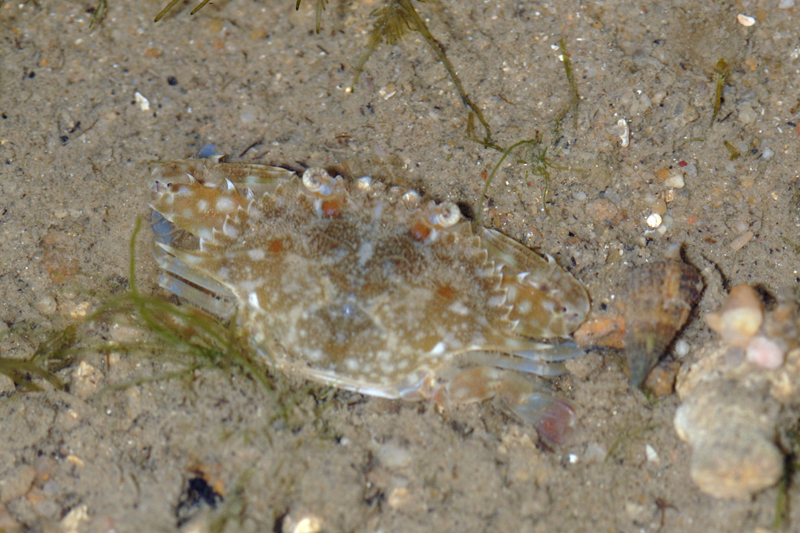 |
| Flower crab 1 |
 |
| Flower crab 2 |
So is the blue-spined swimming crab (
Thalamita sp.).
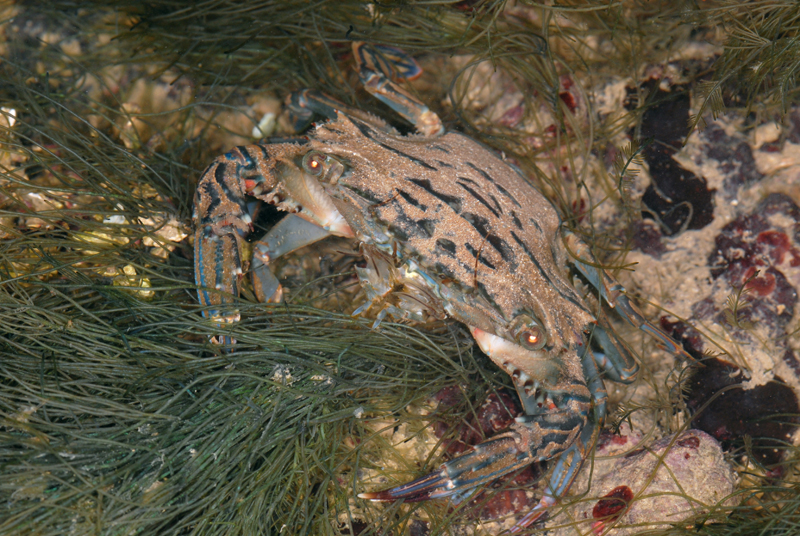 |
| Blue-spined swimming crab |
And the spoon-pincer crab (
Leptodius sp.).
 |
| Spoon-pincer crab |
A spotted moon crab (
Ashtoret lunaris) realised it was seen and it quickly tried to swim away. However burrowing in the sand is still the best method for this fellow to "disappear". Moon crab are fast burrowers but this crab suddenly stopped burrowing for me to take pictures of it. So nice of the crab. :)
 |
| Spotted moon crab |
Today is a crabby day. That is why I name my post "Crabby-venture". I kept meeting the
hairy crabs (Family Pilumnidae) hiding in their holes, half out of their hole or out feeding.
 |
| Hairy crab 1 (Hiding in its hole) |
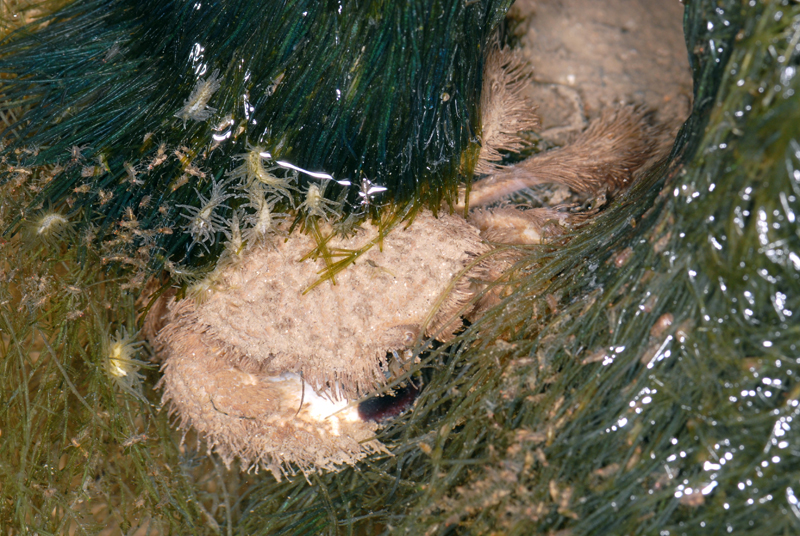 |
| Hairy crab 2 (Feeding in a sheltered area) |
 |
| Hairy crab 3 (Exposing only a few legs) |
 |
| Hairy crab 4 (Out feeding) |
Shao Wei spotted a young kite butterflyfish (
Parachaetodon ocellatus) in a shallow pool. The depth of the pool was alright for the fish and it does not look stranded. Shallow pools provide great sheltered places for young fish when the tide is out.
 |
| Kite butterflyfish |
Sometimes big fish gets stranded in shallow pools as they were unable to move out with the tide. In such situation, do help and give the fish a helping hand.
A worm was swimming on the water surface and it burrowed among the seaweeds when it sensed my presence. I only managed to take a picture of the worm burrowing. It looks like a young giant reef worm (
Eunice aphroditois) to me.
 |
| Young giant reef worm? |
The hairy seaweed provided great places for shrimps to seek shelter. I saw the red nose shrimp (
Periclimenes sp.) with the distinctive red marking at the nose area and a pair of
red-banded shrimp with one of the shrimp having some greenish stuff under the body. Could it be the eggs? The red-banded shrimp was rather active and I was unable to get a picture of the shrimp with greenish stuff on it.
 |
| Red nose shrimp |
 |
| Red-banded shrimp |
There were many tiny shrimps in shallow pools but they were too difficult to be photographed.
I think I saw a coral ghost shrimp (
Glypturus sp.). While looking at a rather large shrimp hole, I briefly saw 2 orange coloured pincers and for a moment I thought it was a lobster. The animal was very shy and it never appear out of the hole even after a long wait. Unfortunately, the reaction of the animal was too swift for me to swing my camera into picture taking mode.
Ria found a large nudibranch. It is about 10 cm long. It is the spotted foot nudibranch (
Discodoris lilacina)
 |
| Underside view |
 |
| Top view |
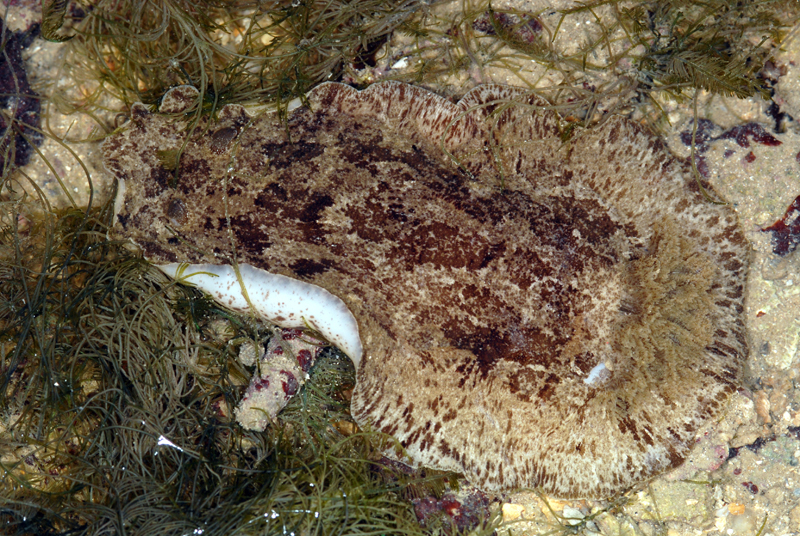 |
| Attempting to make a run |
A pearl conch (
Strombus turturella) was seen and interestingly, it had a string of eggs in front of it. Do the eggs belong to the conch?
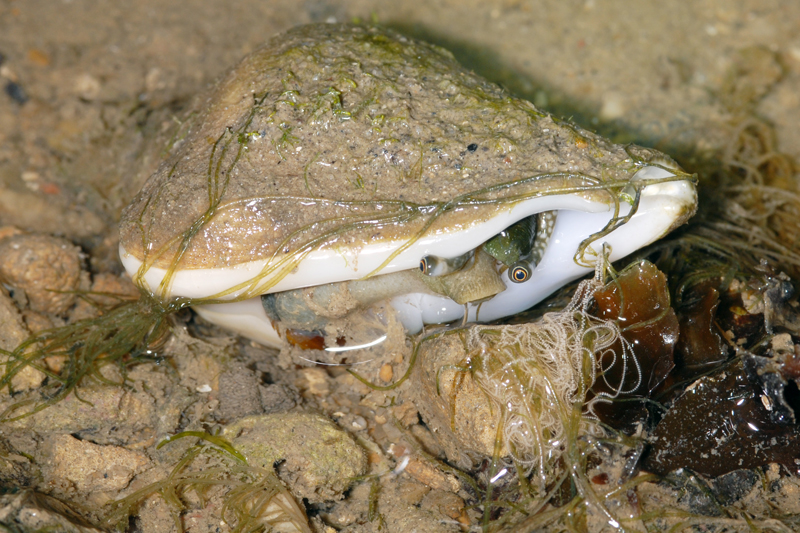 |
| Pearl conch, aka Gong-gong, with its eggs? |
A young
olive snail (Family Olividae). It is a fast burrower.
 |
| Olive snail |
Over time, sand has been slowly deposited on this shore by the tides. Some parts of the shore are becoming more sandy. On sandy shore, we can find the cake sand dollar (
Arachnoide placenta). I think we found about 5 of them.
 |
| Cake sand dollar |
There are many different types of anemones on this shore.
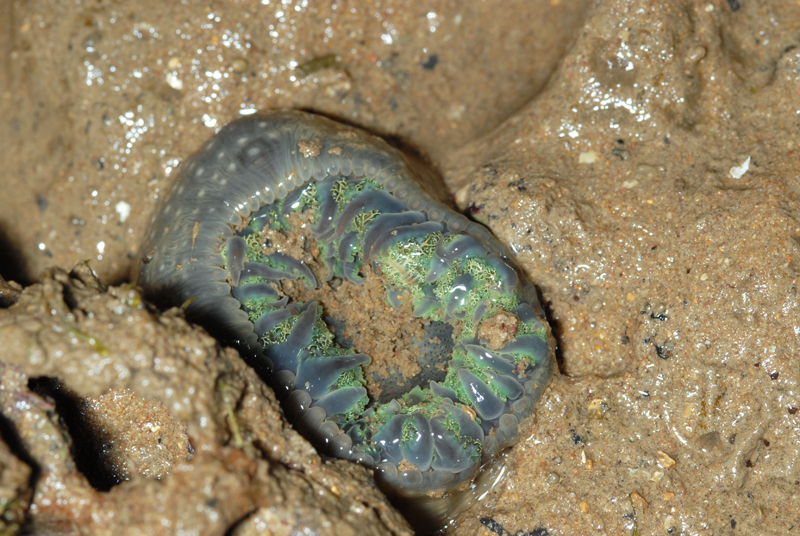 |
| Plain frilly anemone (closed) |
How can we forget about the corals, sponges and zoanthids on this shore? The corals that I saw were doing fine. No sign of bleaching.
 |
| Branching pore coral? |
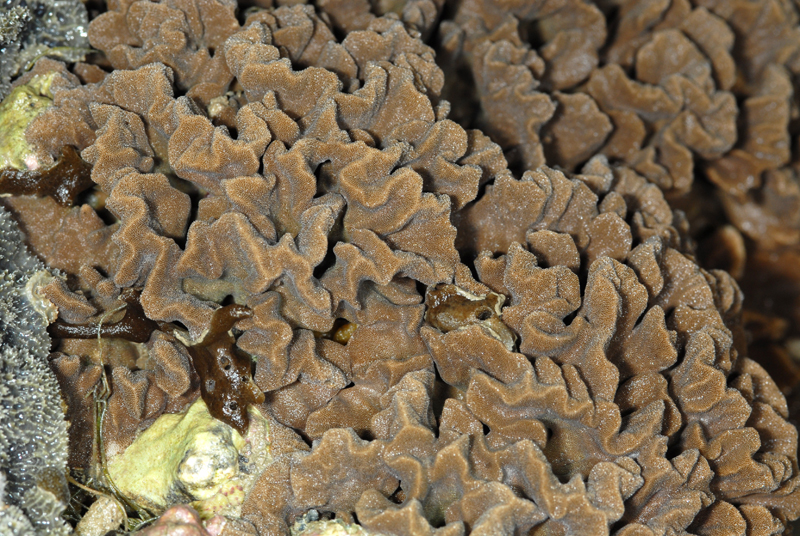 |
| Unknown coral |
The shore of Sentosa is fill with life and it is always changing. The team ran out of energy to continue with the remaining part of the shore but we did walk through the whole stretch. Hope to visit this wonderful place again.
I shall end of with a simple landscape image taken at the shore.





















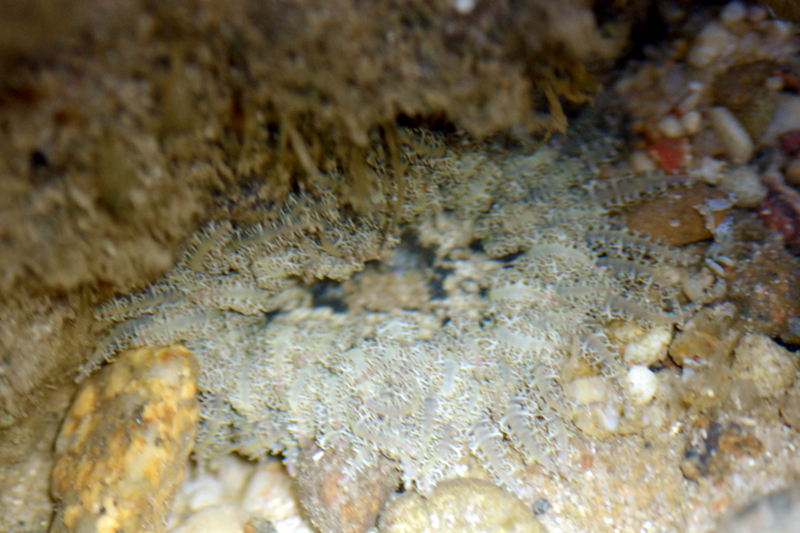






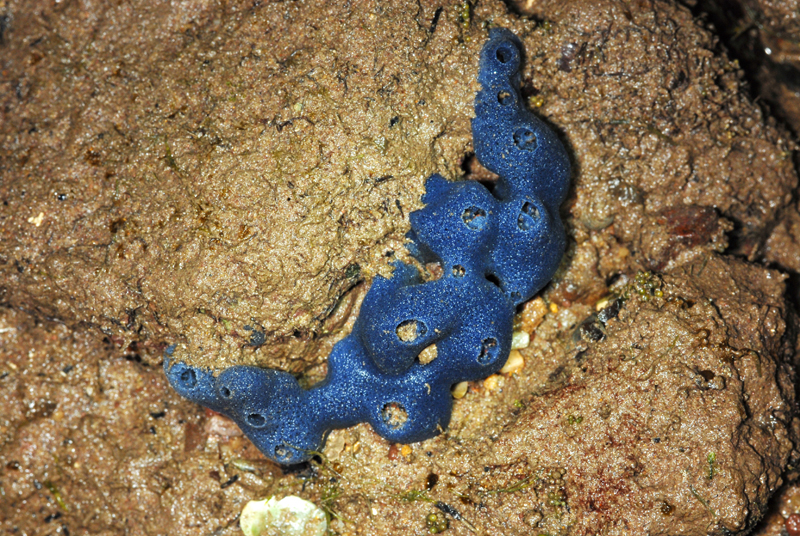


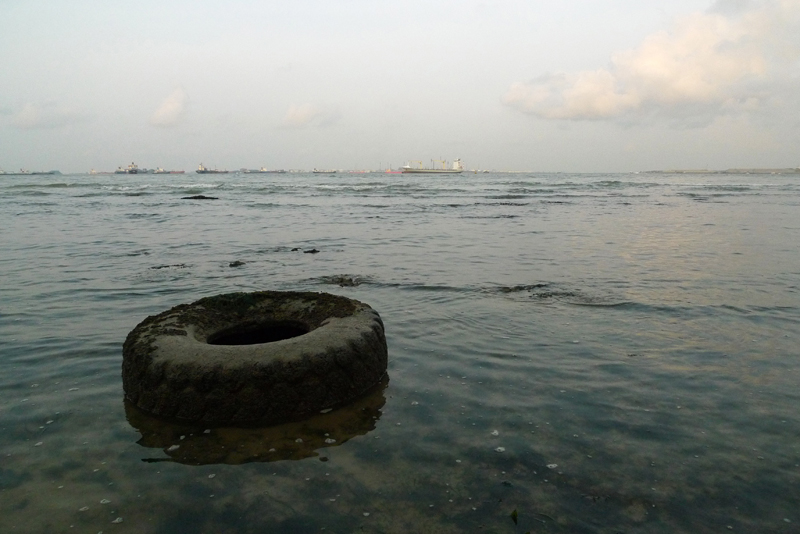
No comments:
Post a Comment